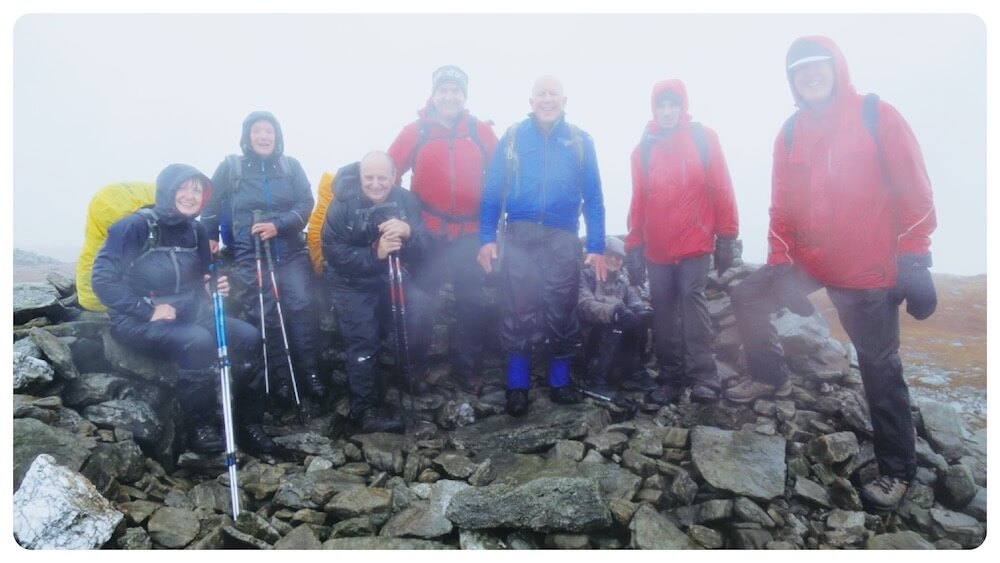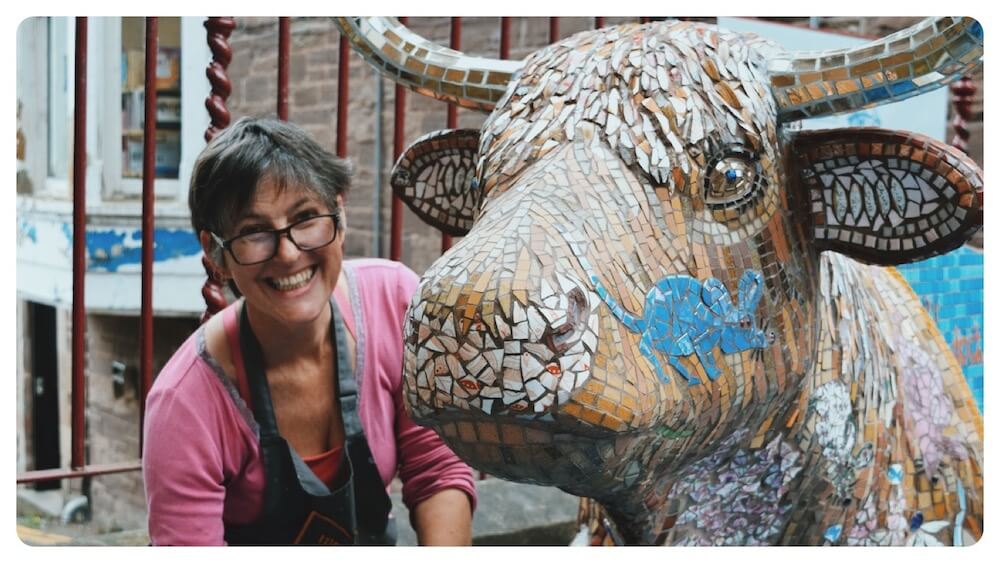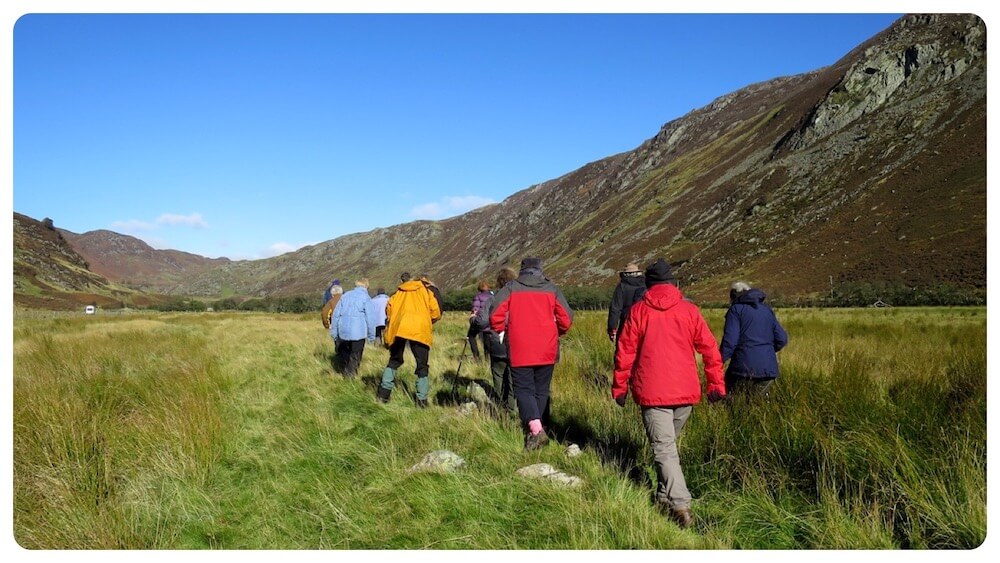Drover’s Walk
Photo credit: Courtesy of the Drover’s Tryst
Walk in the Shadow of Cattle
The English language has the idiom: ‘Before you judge a man, walk a mile in his shoes’. It is a pretty clear reminder to practice empathy.
Culture lovers,
By joining The Drover’s Tryst Walking Festival, you have the chance to learn about the long-vanished Scottish trade of cattle droving.

Drover’s Walk
Photo credit: Courtesy of the Drover’s Tryst
“The history of Scotland goes beyond bloody battles and castles. Away from the famous conflicts associated with Wallace, Bruce and Bonnie Prince Charlie, ordinary folk just got on with their lives. Crieff & Strathearn Drovers Tryst annually celebrates the life, work and play of the people who made Crieff in Perthshire the crossroads of Scotland in the 1700s.”
The Drover’s Tryst website
Film showing the glens of the drovers’ paths
Learn English and Scottish Culture
During the Drover’s Tryst, walkers of different abilities can gather for events over a week in early Autumn and walk the very land that, at the same time of year, tens of thousands of cattle were once driven along.
The walks explore the network of tracks that converge from different locations across the north and northwest of Scotland to reach the huge cattle market (a ‘tryst’) held in Crieff centuries before.

Drover’s Walk
Photo credit: Courtesy of the Drover’s Tryst
“In the second week of October 1714, the Highlanders gathered in Crieff for the annual market. Civil war was expected at any time. By day Crieff was also full of soldiers and government spies! Just after midnight, Rob Roy and his men marched to Crieff Town Square and rang the Town bell. In front of the gathering crowd sang Jacobite songs and drank a good many loyal toasts to their uncrowned King James VIII”.
The Visit Scotland website

About the Historic Trysts
In Scots, the word ‘tryst’ means an agreed meeting place.
It would have been a truly remarkable sight, seeing the cattle flow into Crieff.
The Drover’s Tryst walking festival brings the possibility of imagining the sights and mayhem of thousands of cattle arriving into Crieff as you walk the routes where short, black highland cattle poured into the Sma’ Glen from the north – or from the north east (as far as Aberdeenshire) down Strath Tay.
Film showing the glens of the drovers’ paths
Dangerous Visitors
Such an influx of cattle and commerce brought its own problems in less law-abiding times.
Cattle theft was rife, and Crieff grew famous for hanging lawless Highlanders.
There wasn’t much cash at this time, so dealing was based on bills of exchange: there was even a bank crash in 1772 which brought down several embryonic financial houses who had interests in the cattle trade.
“According to the schoolmaster for Monzie in the Statistical Account of 1793 the good citizens of that Parish “went in fear of their lives from the Highland drovers who broke into their houses, forcibly billeting themselves and often carried off part of the household goods and removed the potatoes from their fields”.
The Drover’s Tryst website
The Destruction of Crieff
They were feisty times, and in 1716 Jacobites burnt Crieff on their way back from the Battle of Sheriffmuir.
Many townsfolk perished in the cold of the ninght.
A Changing Marketplace
Although cattle trading in Crieff continued until the 1950s, in 1770, Crieff’s huge tryst was transferred to Falkirk.
By then the Jacobite threat had faded and English dealers felt more confident about travelling north of the border.
“The old people here sometimes speak with deep regret of the glorious scene displayed to view when 30,000 black cattle in different droves overspread the whole adjacent country for several miles around the town.”
The Drover’s Tryst website

Drover’s Tryst Walk
Photo credit: Courtesy of the Drover’s Tryst
Visit Perthshire | Crieff’s Cowches
In a tourism initiative, Crieff’s cattle market history was celebrated this summer by the appearance of 11 ‘Cowches’ in a fun art trail around the town.
Each Cowch (a cow shaped like a couch) was decorated by selected artists and featured designs about a local businesses or local inspiration.

Artist Katy Galbraith with her Cowch ‘Sweet Annie’
Enrich your English Language Holiday
For a poignant celebration of the social history of Crieff and an introduction to understanding Crieff’s place within the landscape, environment, history, economy and agriculture, we recommend that you strap your boots on and join the Drover’s Tryst Walking Festival to learn the stories of the people and land.
This year’s programme included easy-level walks with an archaeologist, a forager/herbalist, a beekeeper, a tour of a smallholding and a landscape photography lesson.
“Guided walks are the core of the festival, ranging from themed easy walks to high level walks in the hills up to an hour away from Crieff. The area and the walking programme include a wide variety of terrain, from wooded walks along the River Earn to routes that climb Munros.
Walks are enriched by wildlife, plants, trees, history and the company of like-minded people.
Complementing the walking programme is a series of evening social events, including music, informative talks, cinema and a ceilidh.”
The Drover’s Tryst website

Visit Perthshire | Walk Perthshire
If you are planning an English Language learning holiday in Scotland next year, why not choose from a week of activities with the Drover’s Tryst Walking Festival before joining our week-long English courses at Blue Noun English Language School.


Drover’s Tryst Social Event
Photo credit: Courtesy of the Drover’s Tryst
Further Reading
Mosaic artist Kathy Galbraith.
Interested in Crieff’s History? You might like to read:

